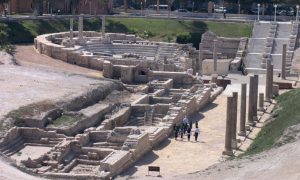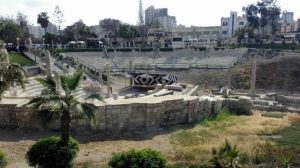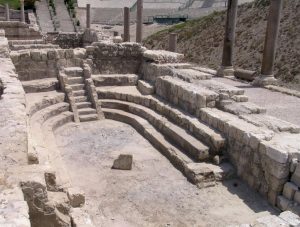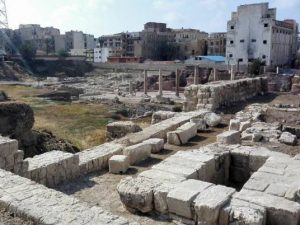After 50 years of excavations, the site of Kom el-Dikka, where archaeologists unearthed the ancient district of Alexandria, Egypt, has been opened by the public. The remains of buildings are dated to 332 BC when the city was founded by Alexander the Great.

The Kom el-Dikka area encompasses Alexandria’s imperial bathing complex, a cistern, a Roman amphitheatre, the so-called bird villa, residential houses from the Hellenistic period until the Islamic era, porticoes, and the ancient university consisting of numerous auditoriums and one large one, called the auditorium maximum.

The growth of the city is attributed to the Ptolemaic dynasty, whose members constructed the legendary Library of Alexandria and the Lighthouse of Alexandria, one of the The Seven Wonders of the Ancient World. It was the capital of Egypt until 7th century, when it was moved to Fustat, near modern Cairo.

The building of the so-called university dates to the times of the Emperor Justinian I in the 6th century AD. It consists of 22 auditoriums built along a long portico. The rooms were discovered in very good state, with stone benches still preserved. These are the only known and discovered structures of an ancient college in the Mediterranean area so far. One of the most known structures in the district is the ancient Roman theatre, discovered by one of the founding fathers of Polish archaeology, Kazimierz Michałowski. According to the researchers it served originally as an odeon, a place where music was plated to the public, but in the early 6th cent. AD it was rebuilt to the shape of an anvil and covered with a dome. Then it started to be used as a large auditorium for teaching – the so-called auditorium maximum.

The archaeological park exists for a couple of decades, but it is the first time when a tourist route was opened that leads around the whole area of excavations. At present it is the largest are in Egypt where an ancient Greco-Roman city is displayed. Polish archaeologists of the Centre of Mediterranean Archaeology of the University of Warsaw are planning to continue their research, as the most ancient layers, linked with development of the town by Alexander the Great and the first Ptolemaic rulers, are still waiting to be unearthed.
(after Nauka w Polsce, Egypt Independent, Egypt’s Ministry of Antiquities & Centre of Mediterranean Archaeology of the University of Warsaw)